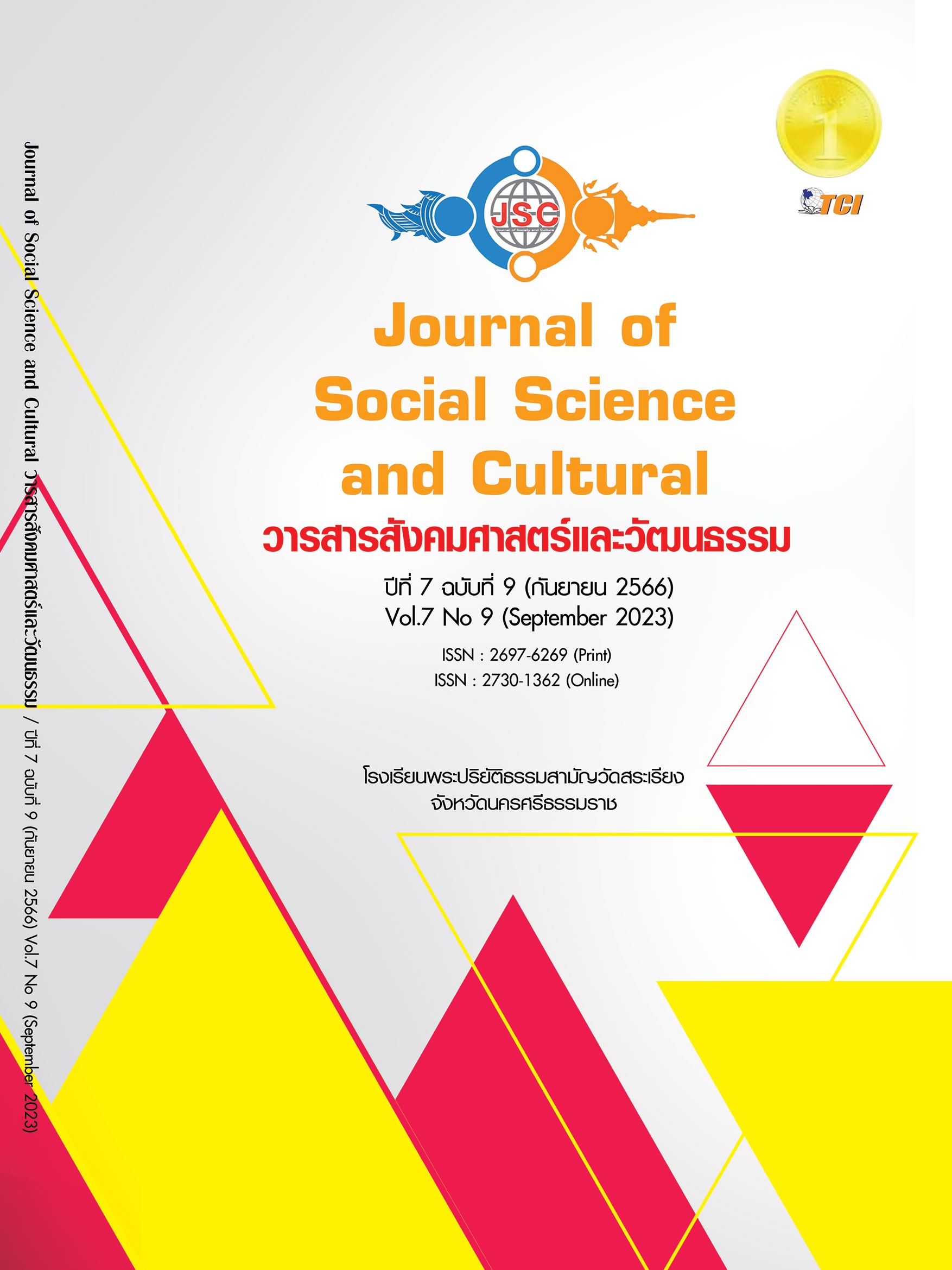DEVELOPMENT OF A DIGITAL COMPETENCY MODEL FOR VOCATIONAL TEACHERS
Main Article Content
Abstract
The objectives of this research article are to 1) study appropriate digital competency components for vocational teachers, 2) develop a digital competency model for vocational teachers, and 3) evaluate the effectiveness of using the digital competency model for vocational teachers. Conducted in 3 phases: Phase 1: Analyze documents and related research (Document Analysis) and study the appropriate digital competency components for vocational teachers. with EDFR research techniques from Purposive Sampling 21 experts using semi-structured questionnaires and opinion questionnaires to confirm the future, it was found that the digital competency components that are suitable for vocational teachers consist of 4 aspects: Knowledge, Skills, Attributes, and Technology Application. Phase 2: Development of a digital competency model for vocational teachers drafting a digital competency model for vocational teachers using ADDIE's 5-step approach, consisting of 5 components: 1) Principles of the model, 2) Model objectives, 3) Target groups, 4) Curriculum, and 5) Evaluation and results. test model performance by the method of finding the efficiency value, E1/E2 is high according to the criteria set at 75/75 equal to 76.47/85.10. and Phase 3: Evaluate the effectiveness of using digital competency models for vocational education teachers. By comparing before - after training and actually experimenting with a sample group of vocational education teachers. under the vocational education department of Nakhon Si Thammarat Province by Purposive Selection number of 50 people using the Independent t -test statistic, a tool used to collect data. test before-after training and satisfaction assessment form. The results showed that the model after the training was significantly higher than before the training at 0.01 level and the effective index (E.I) was 0.6121 and the satisfaction assessment result. the overall picture is at the highest level.
Article Details
References
จีรศักดิ์ หมุนขำ. (2563). การศึกษารูปแบบการฝึกอบรมฐานสมรรถนะด้านการจัดการเรียนรู สำหรับครูผู้ช่วยในสถานศึกษาสังกัดสำนักงานคณะกรรมการการอาชีวศึกษา โดยวิธีการเรียนรูแบบมีส่วนร่วม. วารสารวิจัยราชภัฏกรุงเกา มหาวิทยาลัยราชภัฏพระนครศรีอยุธยา, 7(3), 49-56.
ญาณภัทร สีหะมงคล. (2563). การพัฒนาโปรแกรมเสริมสร้างสมรรถนะครูด้านการวัดและประเมินผลการเรียนรู้ในศตวรรษที่ 21 สำหรับสถานศึกษา สังกัดสถาบันการอาชีวศึกษา. วารสารชุมชนวิจัย มหาวิทยาลัยราชภัฏนครราชสีมา, 15(4), 169-181.
ดิเรก พรสีมา. (2554). แนวทางการพัฒนาวิชาชีพครู (เอกสารอัดสำเนา).
ปรัชญนันท์ นิลสุข. (2542). WBT: Web-based training เทคโนโลยีการฝึกอบรมครูในอนาคต. วารสารศึกษาศาสตร์ปริทัศน์ มหาวิทยาลัยเกษตรศาสตร์, 14(2), 79-88.
พิจิตรา ธงพานิช. (2561). การพัฒนาแบบจำลอง NPU Model: เพื่อส่งเสริมการพัฒนาหลักสูตรและนวัตกรรมการจัดการเรียนรู้. วารสารศิลปากรศึกษาศาสตร์วิจัย, 10(1), 61-71.
ภูเบศ เลื่อมใส. (2559). การพัฒนาแบบจำลองการฝึกอบรมสมรรถนะด้านเทคโนโลยีสารสนเทศ สำหรับครูสังกัดองค์การบริหารส่วนจังหวัดชลบุรี. วารสารศึกษาศาสตร์ มหาวิทยาลัยนเรศวร, 19(1), 248-259.
มะยุรีย์ พิทยาเสนีย์. (2563). แนวทางการพัฒนาสมรรถนะเทคโนโลยีดิจิทัลของนักศึกษาครูมหาวิทยาลัยราชภัฏ. วารสารมหาวิทยาลัยราชภัฏลำปาง, 9(1), 64-73.
วรากรณ์ สามโกเศศ และคณะ. (2553). ข้อเสนอระบบการศึกษาทางเลือกที่เหมาะสมกับสุขภาวะคนไทย. กรุงเทพมหานคร: ภาพพิมพ์.
สำนักงานเลขาธิการสภาการศึกษา. (2560). แผนการศึกษาแห่งชาติ พ.ศ. 2560 – 2579. กรุงเทพมหานคร: สำนักงานเลขาธิการสภาการศึกษา.
สำนักงานสภาพัฒนาการเศรษฐกิจและสังคมแห่งชาติ สำนักนายกรัฐมนตรี. (2565). แผนพัฒนาเศรษฐกิจและสังคมแห่งชาติ ฉบับที่ 13 (พ.ศ. 2566—2570). กรุงเทพมหานคร: สำนักนายกรัฐมนตรี.
Anderson, L. W., & Krathwohl, D. R. . (2001). A taxonomy for learning, teaching, and assessing: A revision of Bloom’s taxonomy of educational objectives. New York: Addison Wesley Longman.
Barr, M.J. & Keating, L.A. . (1990). “Introduction: Elements of Program Development,”Development Effective Student Services Program. San Francisco: Jossey- Bass.
Calvani, A. et al. (2009). Models and instruments for assessing Digital competence at school. Journal of E-learning and Knowledge Society, 4(3), 183-193.
McKinsey. (2007). McKinsey Report on Education. Retrieved March 1, 2014, from ttp//www.mckinsey.com


